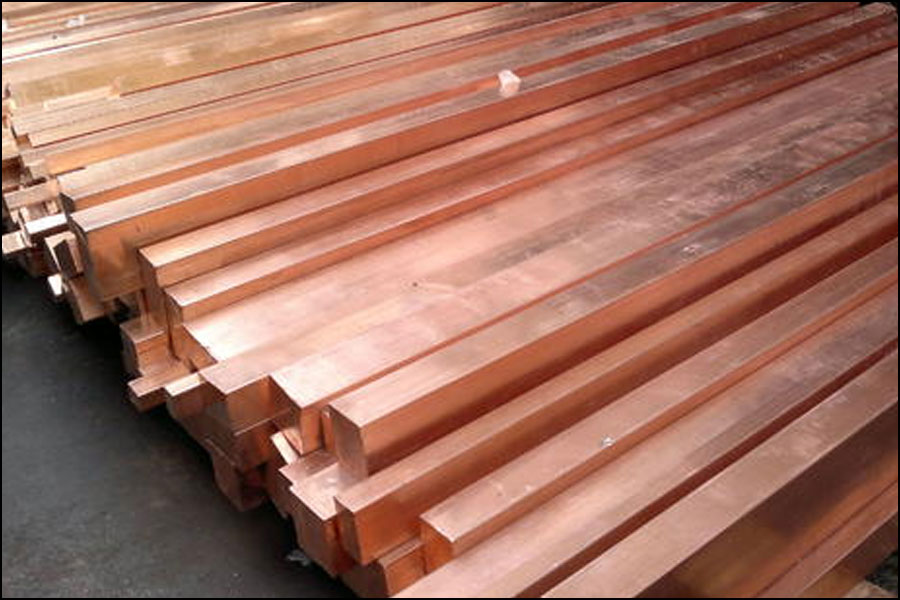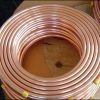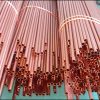
The development of Chinese bronze culture is divided into three stages, namely the formation period, the peak period and the transformation period. The formation period refers to the Longshan Era, 4500-4000 years ago; the heyday is the Chinese Bronze Age, including Xia, Shang, Western Zhou, Spring and Autumn and the early Warring States period. It lasts for more than 1,600 years, which is the traditional Chinese system. The age of bronze culture; the transition period refers to the end of the Warring States Period-the Qin and Han Dynasties. Bronze has been gradually replaced by iron. Not only has the number of bronze wares been greatly reduced, but also the original ritual and musical weapons and their use in important occasions such as ritual sacrifices and war activities have become daily tools. The corresponding instrument types, structural features, and decorative arts have also undergone turning changes.
Formation period: The Longshan Era 4500~4000 years ago, which is equivalent to the legendary era of Yao, Shun and Yu. The ancient literature records that people had begun to smelt bronzes at that time. Archaeological excavations in the Longshan Period sites in the middle and lower reaches of the Yellow River and the Yangtze River revealed bronze ware products in dozens of sites. Judging from the existing materials, the copperware in the forming period has the following characteristics:
- 1. Copper and bronze coexist, and brass appears. A bronze knife cast by a fan was unearthed at the Linjia site in Dongxiang, Gansu province; two red bronze ornaments with holes were found at the Dachengshan site in Tangshan, Hebei province; a fragment of a bronze vessel containing 7% tin was unearthed in Longshan City, Wangchenggang, Dengfeng, Henan province; A complete copper bell, red copper, was unearthed from the Taosi Cemetery in Xiangfen, Shanxi Province; two brass cones were unearthed from the Sanlihe Site in Jiaozhou, Shandong Province; and a brass fragment was unearthed from Yangjiaquan, Qixia, Shandong Province. The largest number of copper products is found in the Qijia culture in Gansu, Qinghai, and Ningxia. There are knives, cones, diamonds, rings and bronze mirrors unearthed from several cemeteries, some of which are bronze and some are red copper. In terms of production technology, some are forged and some are cast with fan, which are relatively advanced.
- 2. There are few types of bronze wares, most of which belong to daily tools and daily life categories, such as knives, cones, diamonds, rings, bronze mirrors, and ornaments. But it should be admitted that at that time people were able to make containers. In addition, red or yellow pottery pots are common in Longshan culture, and they often have metal rivets that imitate their mouths and crotch. If one thinks that the copper pots at this time have the same functions as the Xiashang copper pots, jue and scorpion containers, then The bronze ware has been or has begun to turn to ritual vessels.
- 3. Copper products are also unearthed from small sites, and the average residents also own bronze products. In addition, the bronze products of this period are so simple and unadorned, even the decorative bronze mirrors are only geometric ornaments such as star stripes, triangles, etc., without the mystery of the three-generation bronzes.
Heyday: Including Xia, Shang, Western Zhou, Spring and Autumn and the early Warring States period, which lasted for more than 1,600 years. The bronzes of this period are mainly divided into ritual instruments, weapons and miscellaneous objects. Musical instruments are also mainly used in ancestral temple sacrificial activities. The ritual vessel is used in the ritual of the ancient red tape. It has a certain sacredness and cannot be used in general life occasions. Among all the bronze wares, there are the largest number of ritual vessels and the most exquisitely crafted ones. Ritual musical instruments can represent the highest level of Chinese bronze craftsmanship. The types of ritual utensils include cooking utensils, food utensils, wine utensils, water utensils and idols. The bronzes of this period are the most exquisitely decorated, and there are many types of cultural ornaments.
One of the most common patterns on bronzes is the gluttonous pattern, also called the animal face pattern. This kind of decoration first appeared on the jade articles of Liangzhu culture in the lower reaches of the Yangtze River 5,000 years ago, and Shandong Longshan Culture inherited this kind of decoration. In the “Lv Family Spring and Autumn · Foresight”, it is stated that “Zhou Ding wears gluttonous food, has a head and no body, cannibalize without swallowing, and harms his body”. Therefore, this animal facial pattern is generally called gluttonous pattern. The gluttonous pattern already exists on the bronzes in the Erlitou Xia culture. There are many types of gluttonous patterns in the Shang and Zhou dynasties. In the Western Zhou Dynasty, the mystery of bronze decorations gradually faded. Dragon and phoenix are still the motifs of many bronze patterns. It can be said that many patterned patterns are actually derived from the two types of dragons, snakes and phoenix birds.
The cicada pattern is a common pattern in the Shang Dynasty and Western Zhou Dynasty. In the Spring and Autumn Period, there are also deformed cicada patterns. In the Spring and Autumn Period, the Chilong pattern prevailed and gradually occupied a dominant position, almost squeezing out other patterns.
Another outstanding feature of ancient Chinese bronzes is the exquisite craftsmanship, which shows the creative talents of ancient craftsmen. The method of making bronzes with composite pottery casting was fully developed in ancient China. Tao Fan’s selection of materials and plastic models, pattern engraving are extremely elegant, and the technology of mixed casting, split casting, casting joint and stack casting is very mature. The subsequent development of the lost wax process technology that does not require separate casting is undoubtedly a major advancement in the bronze casting process.
Inlaying on bronzes to increase beauty, this technique appeared very early. Inlaid materials, the first is turquoise. This green gemstone is still used in jewelry today. The second type is jade, with jade aid, spear of jade leaf, axe of jade blade, etc. The third type of meteorite iron, such as the iron-blade copper yue, and the iron-aided copper blade, has been identified as large iron. The fourth type is inlaid with red copper, using red copper to form animal-shaped patterns. During the Spring and Autumn Period and the Warring States Period, there were also bronzes decorated with gold and silver. The famous Yue Wang Sword is also cast in bronze.
During the Eastern Zhou Dynasty, the development of smelting and casting technology was relatively high, and the summary document “Kaogongji” appeared on the technology of manufacturing bronzes. The book specifies the proportions of copper and tin in bronze used to make bells, axes, and halberds. Due to frequent wars, weapon casting has developed rapidly. In particular, the swords of Wu and Yue are extremely sharp and well-known in the world. There have been some famous sword-making craftsmen, such as Ganjiang, Ou Zhizi and others. Although some swords have been buried underground for more than two thousand years, they can still be cut into stacks of paper. Some swords, such as the Yuewang Goujian sword, have undergone certain chemical treatment on the surface to form rust-proof diamond, scale or flame-shaped patterns, which are extremely gorgeous.
Another characteristic of Chinese bronzes is that no portrait has been found so far. Many bronze wares use human faces as ornaments, such as human face square tripods, human face yue, etc., but these human faces are not the faces of specific characters. More artifacts are the overall image of a person, such as a human-shaped lamp or a utensil holder; or the entire person is used as a part of the artifact, such as a clock frame with a saber, a human-shaped raised hand supporting the beam, and a few human-shaped feet under the copper plate In the same way, most of these human figures are costumes for men and women, and they are not portraits of specific servants. The three-dimensional images and heads of people unearthed in Sanxingdui, Guanghan, Sichuan are all larger than normal people. They have long ears and eyes, high nose and wide mouth, and are full of mystery. They should be mythical figures.
Thousands of bronze wares in the Shang and Zhou Dynasties have inscriptions on them. These writings are generally called inscriptions. For historians, it plays a role in verifying and supplementing history.
The inscriptions on Chinese bronzes are mostly written by casters. The indented words are called Yin Wen, and the few words that are raised are called Yang Wen. In the Shang Dynasty and the Western Zhou Dynasty, it can be said that the inscriptions were all cast, and there are only very few examples of lettering with sharp tools.
In the late Western Zhou Dynasty, completely carved inscriptions began to appear. In the middle of the Warring States period, most of the inscriptions were already carved. Even the three very classic ritual objects from the Han Tomb of King Zhongshan in Pingshan, Hebei Province were all carved with a contract. The knife is extremely well-rounded and has high artistic value.
The ancients believed that bronzes were extremely strong and that the inscriptions could be passed on and immortal. Therefore, the items to be circulated for a long time must be cast on bronze objects. Therefore, inscriptions have become important materials for studying ancient history today.
During the Spring and Autumn Period and the Warring States Period, the technology of casting bronzes was further developed. Due to the accumulation of experience, the combination of copper and tin in casting various bronzes had a certain ratio. “Zhou Li·Kaogongji” says: gold has six qi: six points of gold, and tin is one of them, which means that the bell and the tripod are the same; five points of gold, and the tin is one, which means that the axe and cats are all; Four-quarters of gold, and tin in one, it is called the halberd; three-points of gold, and tin in one, that is the same big blade; fifth of the gold, and second, that is the same ; Jin Xiban, that is the Qi of Jian Sui.
The so-called gold here is copper, and copper-tin alloy is bronze. The so-called “six qi of gold” is to distinguish the weight of the six formulas of bronze varieties to make various kinds of utensils. The so-called “Zhong and Ding Qi” ratio of copper to tin is six to one, that is, copper accounts for 85.71% and tin accounts for 14.29%. The ratio of copper to tin in the “Axes of the Axe” is five to one, that is, copper accounts for 83.33% and tin accounts for 16.67%. The ratio of copper to tin in “Ge Jizhi Qi” is four to one, that is, copper accounts for 80% and tin accounts for 20%. The ratio of copper and tin required for the “Big Blades” is three to one, that is, copper accounts for 75% and tin accounts for 25%. The ratio of copper to tin is five to two, that is, copper accounts for 71.43% and tin accounts for 28.57%. The ratio of copper and tin in “Jian Sui Zhi Qi” is one to one, that is, 50% each. Mr. Yang Kuan believes: “Kao Gong Ji” stipulates that “the proportion of copper-tin alloy is very in line with the principle of alloy”. The tin component of bronze is 17% to 20%, which is the toughest. “Kao Gong Ji” says that “the Qi of Axe and Jin” tin accounted for 16.67%, and the “Qi of Ge Ji” tin accounted for 20%, because the axe, the Jin, the Ge, and the halberd all need toughness. Bronze contains 30-40% of tin and has the highest hardness. The “Kao Gong Ji” stipulates that the “big blade of the Qi” tin accounted for 25%, and the “cutting the arrow of the arrow” tin accounting for 28.75%, because this type of weapon requires high hardness. As the amount of tin in bronze increases, the luster will change from bronze to red, orange, and light yellow. When tin accounts for 30-40%, the bronze becomes grayish white. “Kao Gong Ji” stipulates that “Zhong Ding Zhi Qi” tin accounts for 14.29%, in order to make it appear orange and yellow more beautiful, but also to make a beautiful sound. “Kao Gong Ji” stipulates that “Jian Sui Zhi Qi” tin accounts for 50%, because the bronze mirror needs white luster.
Archeologically discovered that there are 19 new bells, 45 yong bells, and one piece of presented by the king of Chu, unearthed in Suixian, Hubei during the Spring and Autumn Period. It is known through sound measurement, “This set of chimes is a seven-tone scale, which is the same as modern music, and its vibration frequency is also similar to modern international standards. The total range spans five octaves, which is one octave less than the range of modern pianos. The sound of this set of chimes is beautiful, the range is very wide, the changing tone is relatively complete, and it can play various tunes”②. The discovery of this group of chimes is a vivid example of the brilliant achievements of bronze casting technology in the Spring and Autumn Period.
“Zhou Li·Kao Gong Ji” says: “For all the shapes of gold, gold and tin are black and turbid, yellow and white are exhausted; yellow and white are exhausted, and blue and white are second; green and white are exhausted, and green is second, and then Cast also.” This is in line with the principles of metallurgy. In the mixed casting of bronze, the impure matter evaporates first, so “black turbidity” is produced. Secondly, tin melts and volatilizes, so “yellow and white gas” is produced. When the temperature rises again, the copper melts and volatilizes, producing “blue gas” again. When the “green gas” appears, the copper and tin are completely melted, and the bronze alloy smelting is completed, and then it can be cast into objects. Xunzi said: Bronze casting is “Xing (type) Fan Zheng, gold (copper) tin beauty, skillful workmanship, and fire.” ③This shows that the production of molds, the selection of raw materials, the skills of smelting and casting, and the control of heat must be mastered in order to cast good objects.
The progress of bronze craftsmanship during the Spring and Autumn Period and Warring States Period is highlighted in the use of the following two technologies: one is the gold-silver coop technology, the so-called gold-silver coop technology is to inlay gold and silver wires on the surface of the bronze to make patterns or texts. This technology appeared in the middle of the Spring and Autumn Period, when the weapons of Chu, Song and other countries had wrong gold art characters. At the beginning of the Warring States period, large pieces of gold and silver patterns appeared on copper ritual objects. In the middle of the Warring States period, this technique was used not only on weapons and ritual objects, but also on talisman, seal, vehicle, bronze mirror, copper with hooks and lacquerware. buckle. Second, after the middle of the Warring States period, the engraving and engraving technique developed. This technique is to make hair-like engraved engraving pictures on relatively thin pots, cemeteries, mirrors, and stubbles. Generally, they are mostly land and water warfare, hunting, etc. Pictures of banquet etiquette. These pictures were carved into the shape of a vessel and then carved with a steel knife.
Transition period: refers to the period from the end of the Warring States Period to the end of the Qin and Han Dynasties. After hundreds of years of merger wars and political, economic, and cultural reforms aimed at enriching the country and strengthening the military, the system of prefectures and counties replaced the enfeoffment system, and a centralized feudal society was finally established. The traditional etiquette system has been completely dismantled. Products have been widely used. Earth-shaking changes have taken place in all areas of society.
The status of bronze ware in social life has gradually declined, and most of the artifacts are used daily, but specific to some bronze ware, there are still many exquisite works. For example, the two-carriage copper carriage and horse unearthed in the Mausoleum of Qin Shihuang in Lintong, Shaanxi. The first rider drove four horses, with a shed on the carriage, and the king was sitting. The two carriages and horses are made of bronze castings, and the size is in proportion to the actual size and is extremely exquisite. There are also many gold and silver ornaments on the car, all painted. The second horse is 3.17 meters long and 1.06 meters high. It can be said to be the most complex and huge bronze ware discovered so far.
Towards the end of the Eastern Han Dynasty, ceramics had developed greatly and played an increasingly important role in social life, which further squeezed daily bronze vessels from life. As for weapons, tools, etc., at this time iron weapons had already dominated. The bronzes of the Sui and Tang dynasties are mainly various exquisite bronze mirrors, usually with various inscriptions. Since then, apart from bronze mirrors, it can be said that there has been no development of bronze ware. Therefore, the research on the development of ancient Chinese bronze ware on this website has been up to the Sui and Tang Dynasties.






